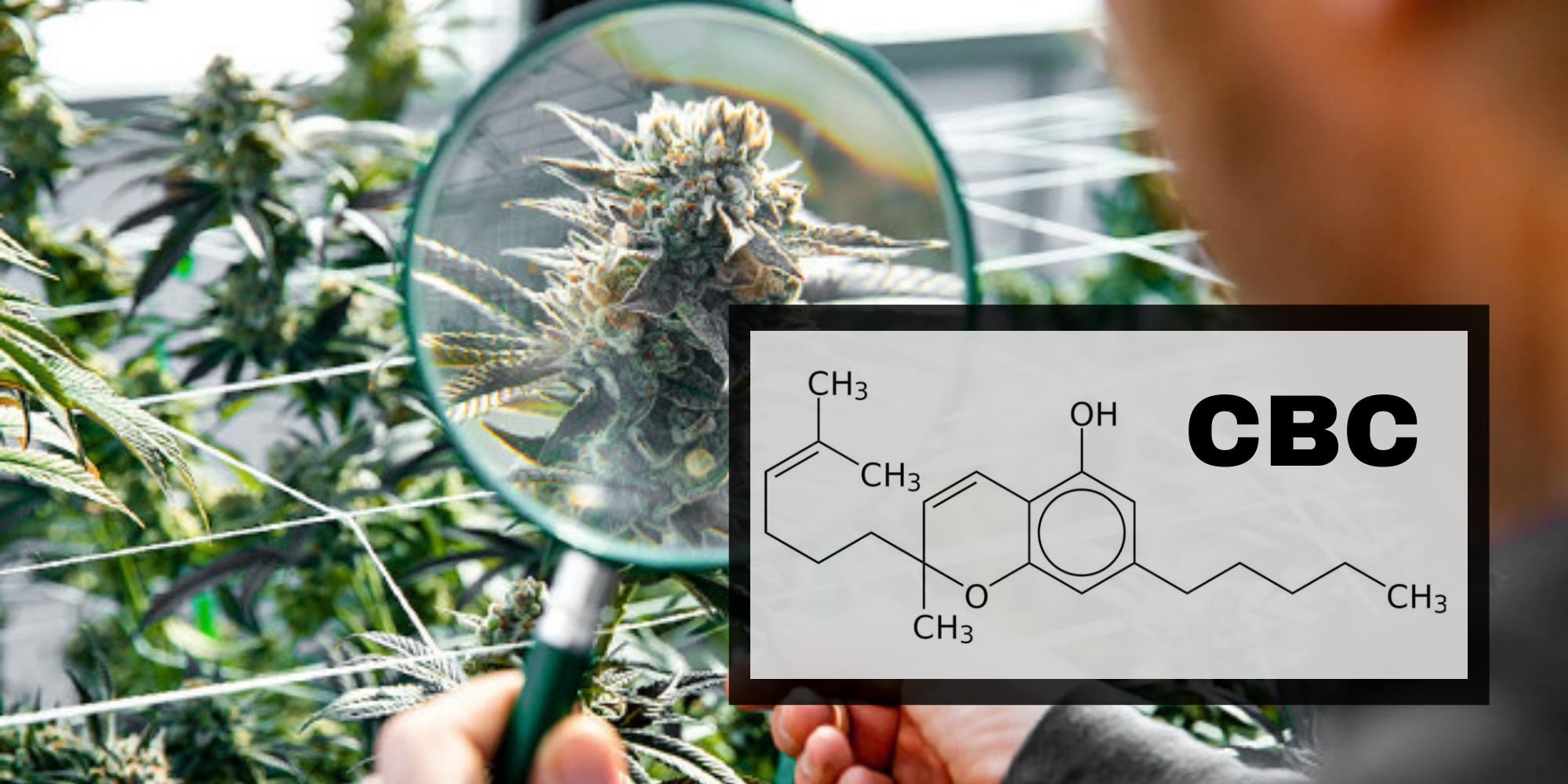First discovered in 1966 by Israeli researcher, Raphael Mechoulamcannabichromene (CBC) is a phytocannabinoid, i.e. a cannabinoid naturally produced by cannabis plants. Still little-known to the general public, it is present in very small quantities in all hemp flowers. No doubt you've already consumed some without knowing it. However, due to its rarity and high price, it has not enjoyed the same recognition and popularity as CBD. Yet its therapeutic properties are very real, and some of them make it one of the most interesting cannabinoids available today.
How is cannabichromene created?
Like all the other natural cannabinoids present in hemp and cannabis more generally, cannabichromene is not directly synthesized by the plant. In fact, it first appears as a precursor. In the case of cannabichromene, this precursor is calledcannabichromenic acid (CBCa). The latter, in turn, is synthesized by cannabigerolic acid (CBGa).
As the plant matures and develops its buds (flowers) during flowering, CBGa is gradually transformed into other cannabinoids, such as THCa, CBDa and, in particular, CBCa. The amount of CBCa in flowers is determined by various factors. The cannabis variety, growing conditions and the time of harvest have a major influence on the cannabichromenic acid content. The latter is then converted into cannabichromene during decarboxylation. This in turn degrades to CBL (cannabicyclol) over time.
Good to know: CBGa is considered the father of all cannabinoids. Produced in the plant's resin glands, also known as trichomesits content will determine the total cannabinoid concentration of the flowers.
Why is cannabichromene so rare?
Although it is present in all hemp flowers hemp flowers harvested and consumed, it is rare to find it in concentrations exceeding 1%. And yet, although it's very common in young plants, its concentration rapidly declines in favor of other cannabinoids such as THCa and CBDa. Of course, some carefully selected and genetically modified cannabis varieties may have higher cannabichromene levels, but this is still very uncommon at present.
But there's no need to lose hope. As the legal hemp market democratizes and expands, it's a safe bet that Europe's CBD producers, always on the lookout for new, interesting and "saleable" molecules, will become more interested in creating high-CBD flowers and resins naturally, just as they did with CBG.
What are the effects of CBC?
Unlike the other best-known cannabinoids, very few studies have been carried out on it. It is therefore difficult to define all the properties of this molecule, which has remained in the shadows for too long. However, the scientific community believes that its structure is very close to that of cannabidiol, and the few studies carried out have enabled us to attribute a number of virtues to it. Here's a non-exhaustive list of its potential effects:
- Analgesia (pain relief): It could enhance the analgesic effects of THC and other cannabinoids. In fact, cannabichromene is considered an "amplifier". This means that it is able to increase tenfold the potential of each cannabinoid with which it interacts. It is the main trigger and regulator of the so-called entourage effect.
- Anti-inflammatory: Like cannabidiol and cannabigerol, it is thought to have anti-inflammatory properties, which may help reduce inflammation in the body.
- Effects on depression and anxiety: According to a study released in 2010, it is 10 times more potent than CBD in helping to reduce symptoms of depression and anxiety, particularly when combined with other cannabinoids. This research demonstrated that a dose of 20mg/kg of cannabichromene administered to mice would be equivalent to 200mg/kg of CBD. This makes CBC one of the most promising non-psychoactive cannabinoids to date!
- Stimulation of brain cell growth: It is thought to help stimulate the growth of brain cells, which may be beneficial for cognitive health.
- Anti-acne: According to a 2016 study, it is able to reduce sebum production and act on skin inflammation.
It's worth noting once again, however, that the effects of CBC are not as well understood as those of other cannabinoids such as THC and CBD, and more research is needed to understand its exact effects.
⚠️ Acids (precursors) do not have the same properties as active molecules. For example, THCa is not psychotropic, unlike THC. CBCa would therefore not have the same benefits as CBC. No studies have yet been carried out on this subject.
How to use CBC?
Like CBD and CBG, to name but a few, cannabichromene can in theory be consumed in both oil and flower form. In reality, it's not quite so simple. In reality, the availability of products with a high content of the CBC molecule is limited due to its rarity, so you'll have very little choice when it comes to enjoying its benefits. A few shops do offer oils with a mix of CBD and CBC, but the lack of diversity will soon be felt.
At 420 Green Road, we've decided to change that! As most of you know, we aim to offer our customers a diverse range of products. However, this principle doesn't stop at the best-known cannabinoids. We strive to innovate and bring you all the active molecules of hemp, even those considered "too expensive" by our competitors. That's why we recently launched the first CBC flowers on the market, accompanied by their homemade resin. Other products, such as concentrates and oils, will be added to our catalog in the near future. Our aim is to provide an option for everyone to enjoy the benefits of this remarkable cannabinoid.
An update on the legality of cannabichromene in Europe
Cannabichromene is completely legal in Europe and France. Until proven otherwise, it is not included in the list of narcotics established by the European Union and the WHO, so its sale is not subject to any particular restrictions. The most reluctant can be reassured: CBC is not a drug, and it is not detectable by saliva testing. Nevertheless, its powerful effects are not to be taken lightly, and we recommend that you do not drive after consuming cannabichromene. Like all cannabinoids, it is not recommended for pregnant women.

